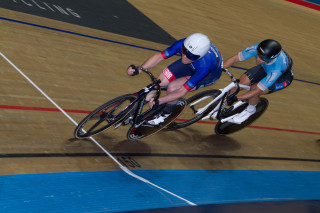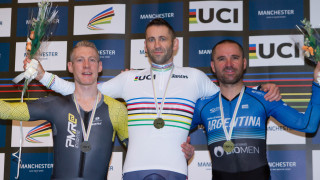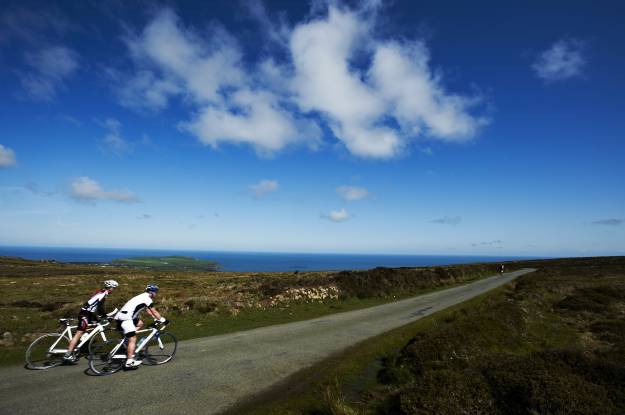Words: Kenny Pryde
Images: Moving Still Images
In recent years, the popularity of Masters age-category racing has spread around the world. The growth of World Masters track championships for riders between the ages of 35 and over 75 shows little sign of slowing. And neither do the riders.
It won't have escaped your notice that 'Masters' racing has grown in popularity and profile in recent years. Relatively recently, competitive riders who reached the age of 40 were consigned 'Veteran' status and found themselves racing against much younger riders. While not quite being tossed on the scrapheap, there wasn't much in the way of Veteran-only racing and becoming a 'Vet' felt like a nudge towards the door marked 'ex-racer.' It wasn't that those riders were no longer competitive – because many were – but nobody can outfox the ageing process and take on riders half their age for ever. The mind may have been willing, the body not so much.
However, given the number of over-40 riders who still wanted to race as well as the influx of new cyclists who hadn't even been riding - far less racing - in their twenties and thirties, there was a clearly a need to organise events for the more 'mature' but still competitive soul. Thus the rise of 'Masters' racing, no longer simply shoehorned into other (younger) riders' events, but rather with their own age-related competitions.
Following the lead of cross-country mountain biking events in the 1990s - with their multiple age-categories - track racing adopted the same broad principles.
Former British Cycling Federation (the forerunner of British Cycling) Ian Emmerson was one of the key players in pushing for the cycling's world federation, the UCI, to recognise an official Masters category, in the early 1990s. Riders had been running their own age-related championship races in Europe for several years before the UCI finally recognised the significance of the growing sector and, in 1995 the first UCI-recognised World Masters track championships were held at Manchester velodrome.

That first three-day event attracted 100 riders from seven nations, from which point the event has grown, with championships held in Sydney in 2007, with two years in Los Angeles in 2017 and 2018. Manchester, the point of origin, remains the championship's spiritual home.
At the 2019 championships there were 535 riders from 35 different countries racing for UCI-recognised Master's titles in age categories from 35 through to 75 and over, although the biggest groupings were between 44 and 55. When children leave home and early retirement becomes an option, older riders get into training again and it turns out that rumours of some sleeping in hyperbaric tents were true...
Riders are all self-funded, which is to say that although they can represent and race for their nations, nobody is funded by their Federations and, in fact riders can race in club colours or plain black skinsuits. The UCI might be sticklers for sock length in Elite World championships, but racing in neutral or club colours is acceptable at these events.
Which is not to say that the Championships are not taken seriously, because bikes, helmets, wheels and clothing are all subject to the same UCI technical regulations as the Elite championship events. All that is different are the distances raced by some of the age groups because if you win, you will be required to attend a dope control!
In the 2019 week-long event Scottish riders enjoyed their best ever results, winning three individual rainbow jerseys through Andy Bruce, Martin Lonie and Carol Scott. Jennifer George won gold as part of her Torq Performance team pursuit squad. Other Scots helped bring home an additional 13 medals of various colours in pursuit, time trial and sprint disciplines. So, take a bow, Masters medal winners Jason Roberts, Alistair Rutherford, Jimmy Rutherford, Peter Ettles, Steve Clayton, Steve McCaw, Graham Barclay, Donna Clayton, Gillian Anderson, Alison Winship MacKay, Kath McCormac and John Gillies.
With large teams from Australia, the USA, Poland, France and Argentina, there were qualifying rounds in pursuit, scratch and points events in certain age groups and, when you discover that the Australian 35-44 year old team pursuit quartet won their event with a 4-09, you can appreciate that the competition in certain events was indeed World – or Commonwealth Games – class.
Next year, the championships will be back in Manchester and Scottish riders are already planning training and racing programmes. “I did the individual pursuit and it was the first race I had ever done,” said Gerry Rafferty, racing in the 60-64 category, “I really dived in at the deep end. I wasn't last, I did beat a French guy, but it was a real eye-opener, I learned so much and I've got ideas to improve and my goal is to finish mid-table next time!” And therein lies the appeal of Masters racing. People are competing for UCI-sanctioned rainbow jerseys, with more than respectable performances in many, many classes, yet the camaraderie is inescapable.
It's racing, it's serious and there's a lot of aero tech involved, but it still manages to be fun too.
Inspired to give track cycling a try?
The Sir Chris Hoy Velodrome in Glasgow offers a full accreditation programme.
This article was written by Kenny Pryde, a Glaswegian journalist and author who has been writing about cycling since 1987. He edited Winning Magazine and Cycle Sport and has contributed to the Guardian, Scotsman, Herald and - for one week only in 1991 - l'Equipe.








